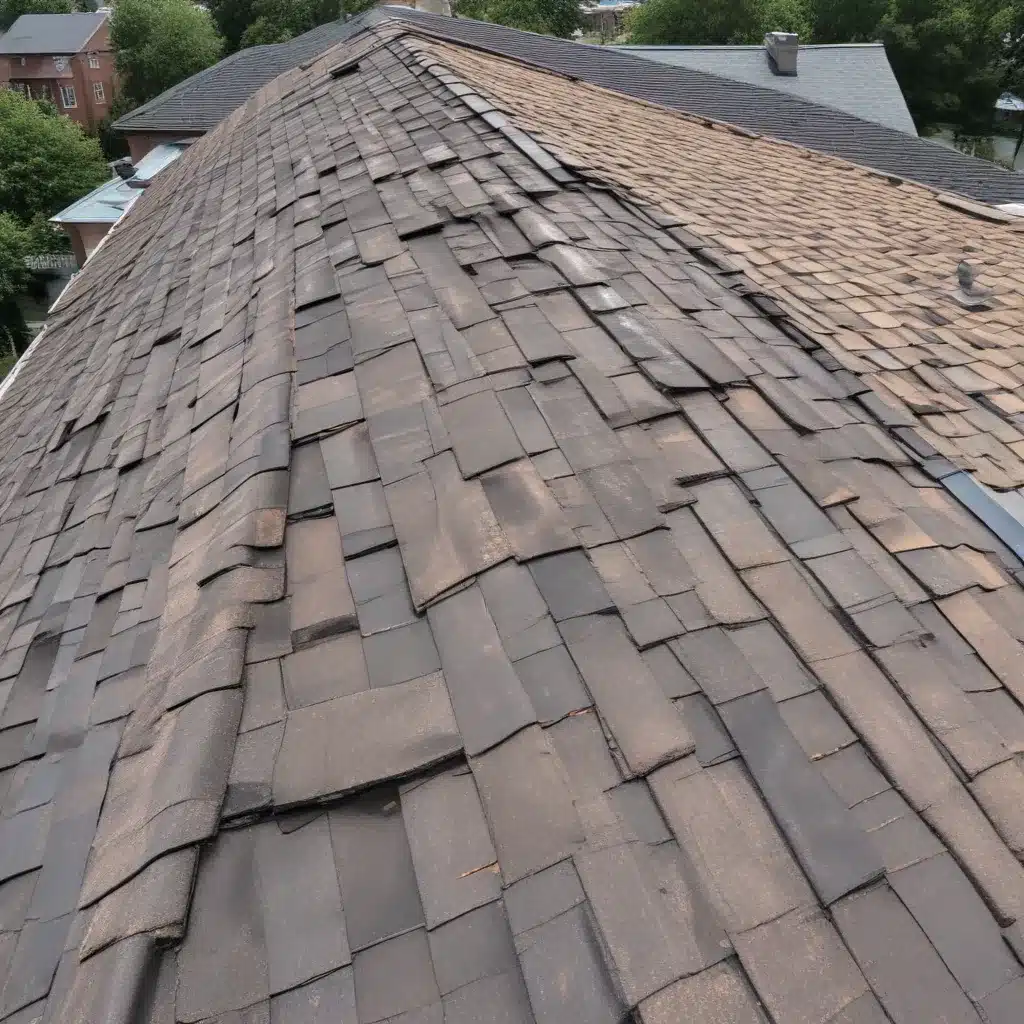
Safeguarding the Architectural Gems of Northampton
Northampton is a city rich in history, boasting an impressive array of heritage buildings that serve as tangible reminders of the region’s storied past. These architectural gems, with their unique roofing designs and materials, hold immense cultural value, and it is our responsibility as roofing professionals to ensure their preservation. In this comprehensive guide, we will explore the intricate techniques and considerations essential for reroofing and maintaining the historic roofs of Northampton.
Understanding the Heritage Roofing Landscape
Northampton’s historic buildings often feature roofs constructed with traditional materials such as Collyweston stone slates, a distinctive local product that has been used for centuries. These slates, produced by exposing the stone to winter frosts and then “cliving” them by hand, lend an unparalleled charm and authenticity to the region’s roofs.
However, as time passes, these heritage roofs can fall victim to wear, damage, and the effects of weathering. Improper maintenance or ill-advised repairs can further compromise their structural integrity and aesthetic appeal. This is where the expertise of seasoned heritage roofing specialists becomes crucial.
Principles of Preserving Historic Roofs
When approaching the reroofing or repair of a historic roof in Northampton, it is essential to adhere to a set of guiding principles that prioritize the preservation of the building’s original character and craftsmanship. These principles include:
-
Authenticity Preservation: Maintaining the original roofing materials, design, and installation techniques is paramount. This ensures that the restored roof remains true to the building’s heritage and retains its distinctive visual appeal.
-
Meticulous Material Selection: Sourcing authentic, high-quality materials that closely match the existing roofing elements is critical. This may involve local quarries or specialty suppliers to obtain Collyweston stone slates or other traditional roofing components.
-
Traditional Craftsmanship: Employing skilled heritage roofing professionals who are well-versed in the use of traditional tools and methods is essential. Their expertise in replicating historic installation techniques ensures a seamless integration of the new roofing elements.
-
Compliance with Conservation Guidelines: Adhering to local and national conservation regulations is crucial to ensure the project’s approval and the long-term preservation of the historic building’s character.
Practical Reroofing Techniques
Reroofing a historic building in Northampton requires a meticulous approach that considers both the structural integrity and the visual aesthetics of the roof. Let’s explore some of the key techniques employed by experienced heritage roofing specialists:
Roof Condition Assessment
Before any work can commence, a thorough assessment of the existing roof’s condition is necessary. This evaluation includes identifying areas of damage, decay, or structural issues that need to be addressed. By understanding the current state of the roof, roofers can develop a comprehensive repair plan that aligns with the building’s heritage and conservation requirements.
Authentic Material Sourcing
Sourcing the appropriate roofing materials is crucial for preserving the building’s historic character. In the case of Northampton’s Collyweston stone slates, this may involve collaborating with local quarries or specialty suppliers to obtain materials that closely match the original. Attention to detail in color, texture, and thickness is essential to maintain the roof’s authenticity.
Traditional Installation Techniques
Skilled heritage roofers in Northampton employ time-honored installation methods to ensure the new roofing elements seamlessly integrate with the existing structure. This may involve techniques such as hand-cliving the stone slates, using traditional fasteners, and replicating the original roof layout and patterns.
Structural Reinforcement
In some cases, the historic roof may require structural reinforcement to ensure its long-term stability and safety. This can involve strengthening the roof framing, addressing water drainage issues, or implementing specialized support systems to accommodate the weight of traditional roofing materials.
Maintenance and Preventive Care
Ongoing maintenance and preventive care are essential for preserving the longevity and authenticity of historic roofs in Northampton. Regular inspections, prompt repairs, and proactive maintenance strategies can help extend the life of these architectural treasures, ensuring they remain in pristine condition for generations to come.
Energy Efficiency Considerations
As we strive to preserve the past, it is also essential to consider the modern-day requirements for energy efficiency and sustainability. When reroofing historic buildings in Northampton, roofing professionals must find a balance between maintaining the building’s historic character and incorporating energy-efficient solutions.
This might involve the use of insulation materials that are compatible with traditional roofing systems, the integration of renewable energy sources, or the implementation of ventilation systems that respect the building’s historic design. By carefully considering these aspects, we can ensure that Northampton’s heritage buildings not only retain their timeless charm but also contribute to a more sustainable future.
The Role of Regulatory Compliance
Reroofing historic buildings in Northampton is not simply a matter of technical expertise; it also requires a deep understanding of the relevant regulatory frameworks and conservation guidelines. Roofing professionals must work closely with local authorities, heritage organizations, and conservation officers to ensure their projects comply with the necessary regulations and preserve the integrity of these cherished structures.
This may involve obtaining approvals for material selection, construction methods, and even the use of modern building technologies within the context of a historic building. By navigating these regulatory requirements, roofers can safeguard the long-term preservation of Northampton’s architectural heritage while adhering to modern standards and best practices.
Conclusion: Safeguarding Northampton’s Roofing Legacy
Reroofing the historic buildings of Northampton is a delicate and multifaceted task that requires a deep appreciation for the region’s architectural heritage, a commitment to traditional craftsmanship, and a thorough understanding of modern roofing techniques and regulatory frameworks.
By following the principles and practices outlined in this comprehensive guide, roofing professionals in Northampton can ensure that the city’s iconic roofs continue to stand tall, preserving the unique character and timeless charm that define the region’s architectural identity. Through our collective efforts, we can honor the past while shaping a sustainable future for Northampton’s built environment.
To learn more about our heritage roofing services or to schedule a consultation, please visit https://www.roofersinnorthampton.co.uk/. Our team of experienced roofers is dedicated to helping you safeguard the architectural gems of Northampton for generations to come.

